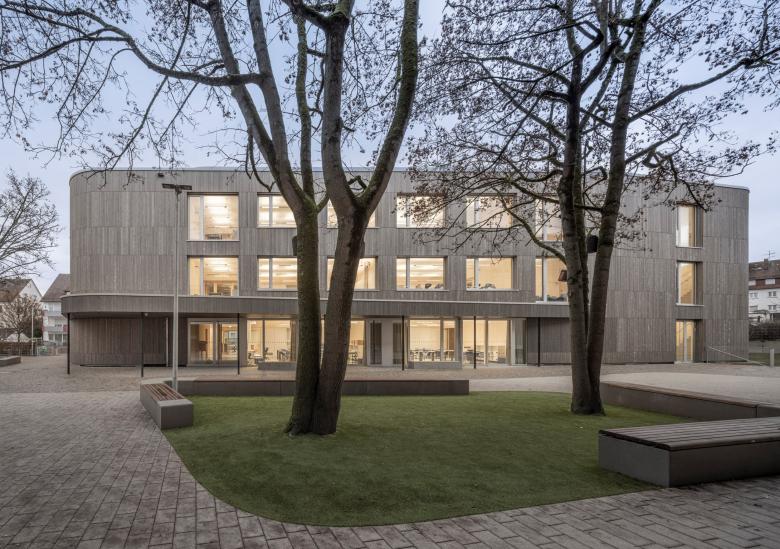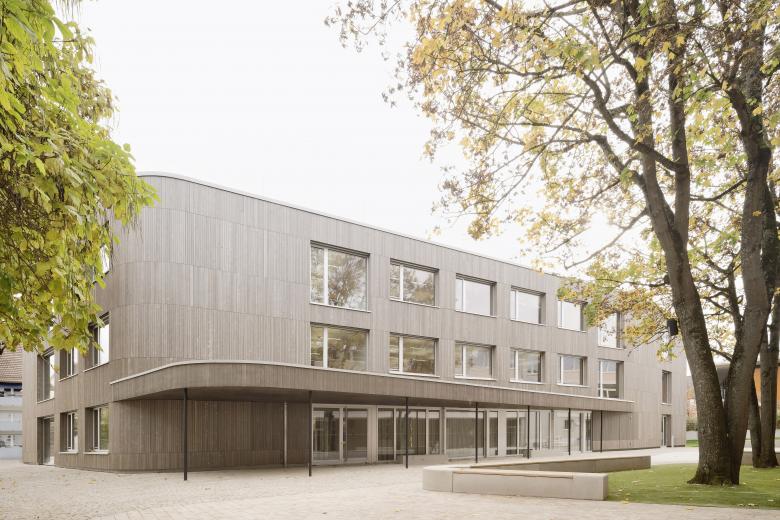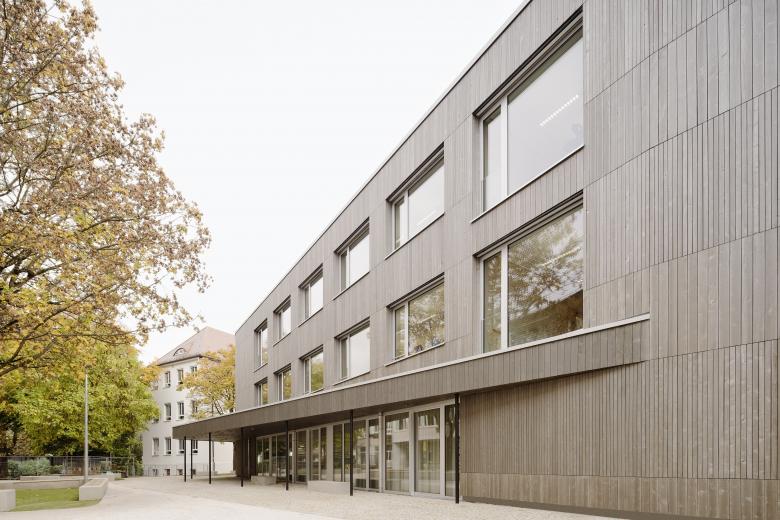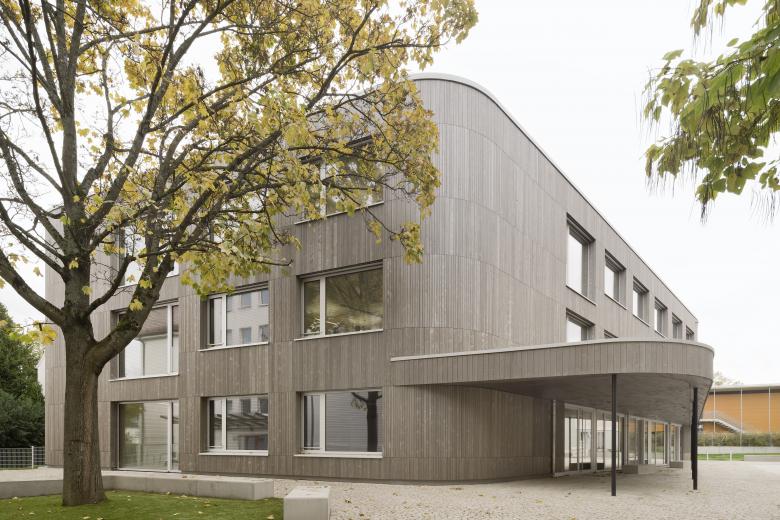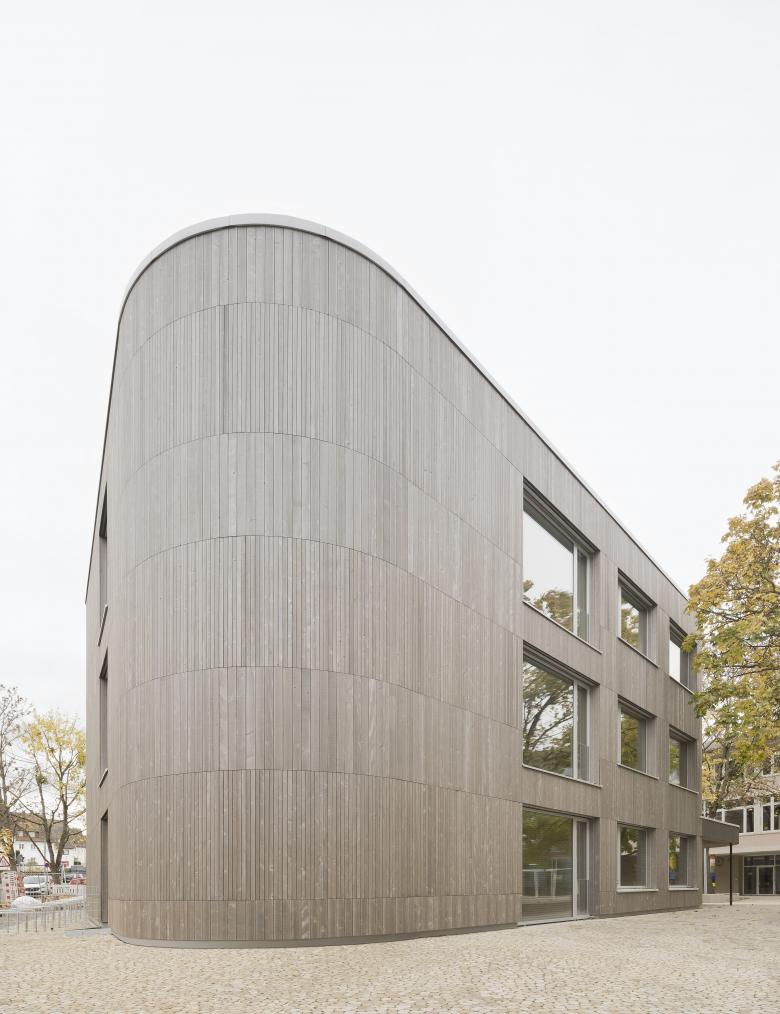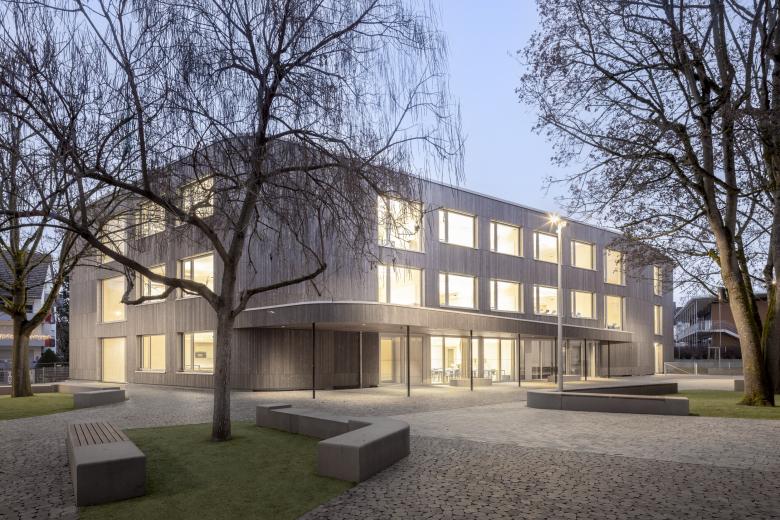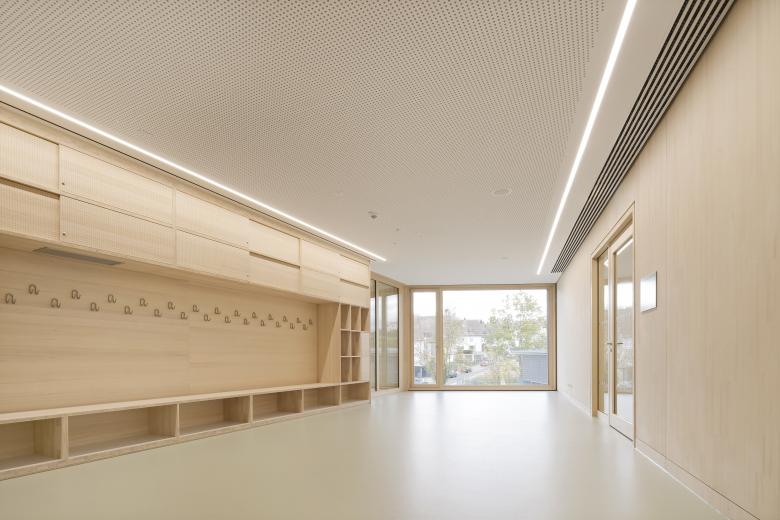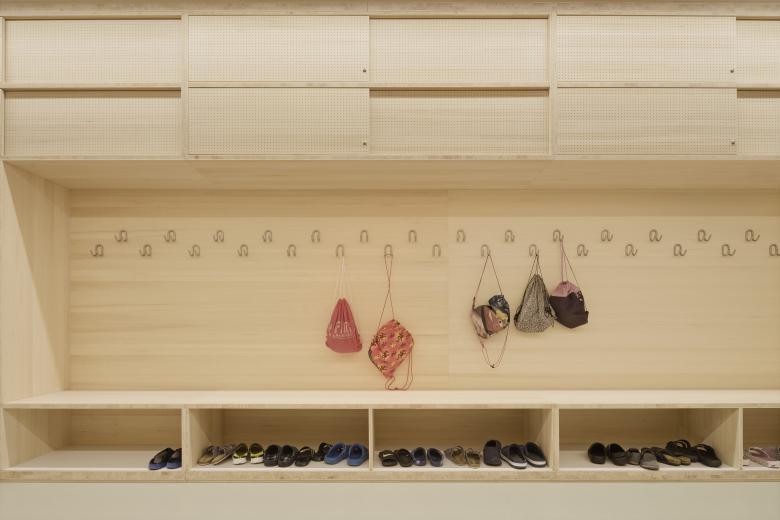Schools are no longer just a place for learning, but an important living space for young people. From this perspective, architecture becomes an enabler, and school construction becomes an expression of social responsibility. School buildings are places that not only impart knowledge but also strengthen the social fabric and provide space for innovation, creativity and community, as demonstrated by our design for the extension of the primary school in Stuttgart-Stammheim. What emerged is a geometrically complex, three-storey new building in sustainable timber construction with 17 classrooms.
In the north of Stuttgart, our design for the extension building of the Stammheim primary school provides a contemporary response to the growing demands in the education sector. The primary school underwent a progressive expansion that not only creates functional spaces for approximately 400 students and 30 teachers but also does what architecture ideally always does: it opens up possibilities.
Construction challenges
Due to increased demand for space and the introduction of an all-day education programme, a third construction stage had become necessary for the Stuttgart-Stammheim primary school. Together with the client, we decided to construct the new building using timber construction. The biggest challenge was to design the building volume in such a way that the extension would be classified under building class 3 according to building regulations. With a higher building class, fire protection requirements would have increased significantly. The associated height restriction – the top floor height must be below seven metres – meant that the respective storey heights of the three-storey building had to be limited to 3.50 metres. To create sufficient clear ceiling heights in the classrooms, the floor slabs were to be implemented with a maximum construction height of 30 centimetres. Given the wide-span ceilings in the classrooms – combined with the non-orthogonal basic geometry of the new building – this was only possible with a timber-concrete composite floor slab (TCC). To further maximise load-bearing capacity, the TCC slabs were designed with so-called birdsmouth joints. To create this geometric form fit, recesses are worked into the wood ply and the cast-in-place concrete cover then “hooks” into the indentations.
Diamond shape and wooden façade
The building is integrated into the existing school complex on the former playground to the east of the main building on Burtenbachstrasse. Its diamond-shaped floor plan is the result of the geometric boundary conditions of the neighbouring development and gives the building a soft contour through laterally cut off and rounded corners.
From the outside, the extension presents itself as a combination of large glass areas and closed light grey wooden sections made of silver fir. The vertical wood cladding is structured by horizontal segmentation: wide bands alternate with narrow wooden slats and narrow bands alternate with wide wooden slats, creating a dynamic effect that, in the interplay with the different window formats, forms a differentiated façade. A tapering roof marks the main entrance, which is accessible from the schoolyard. Here, the main staircase adjoins, which stands out in the façade due to its windowless and large rounded shape.
Bright wood creates a pleasant atmosphere
Inside, the staircase serves as an important spatial design element and is a special feature due to its rounded shape. The main staircase in the north of the building requires no supports in the spacious stairwell. The loads of the three rounded flights of stairs are completely transferred to the exterior walls and floor slabs. The stair railings consist of solid silver fir slats, which are glued into curved panels and fixed to the stairs. A central skylight provides the staircase with daylight.
Bright, natural silver fir wood also distinguishes the wall surfaces and built-in furniture. The wood creates a warm, natural aesthetic and is also an architectural special feature, as the walls meet the high legal requirements for sound insulation due to their two-shell, acoustically decoupled construction. Light-coloured rubber floors and white ceilings complement the friendly colour scheme and, together with the large, partly floor-to-ceiling windows, create a welcoming atmosphere with optimal daylight supply. The architecture is reduced and concentrates on the effect and atmosphere of the chosen materials.
Innovative room layout: a play on geometry and functionality
Vertical access to the floors is via the main staircase and another two-flight staircase in the south of the building. Functional areas with sanitary and building services rooms are connected to the central access points. A lift provides barrier-free access to the floors.
The room schedule does not follow the usual structure where classrooms are lined up along a corridor. Following the cluster concept, there are two groups of rooms on each floor, in each of which three classrooms with modern equipment and the associated differentiation rooms are arranged around a central, widening circulation area, which in turn serves as a communication space or can be used for open teaching formats. Functionally divided cloakroom fittings made of silver fir, which are assigned to the classrooms, are located here. A glass wall between the cluster centre and the differentiation room creates spatial proximity while allowing a view from the centre to the outside.
Sustainable both inside and out
The new timber building was constructed in accordance with the sustainability criteria of the state of Baden-Württemberg, which promote future-oriented construction methods and aim to strengthen the ecological, economic and sociocultural qualities of buildings. For example, the extension achieves an energy efficiency that is 30 percent below the standard of the German Energy Saving Ordinance (EnEV). Other criteria include the sustainable use of resources for timber and concrete components, the use of health-compatible and environmentally friendly building materials and thermal and acoustic comfort in the interior spaces.
In the extension, a photovoltaic system on the roof, bird protection glazing, green roofs, a local heating system with underfloor heating and a ventilation system with night cooling are evidence of a well thought-out ecological approach. The outdoor facilities are planned around the existing trees and all flooring and paving materials are 100 percent permeable. Smooth artificial stone blocks under the trees serve as areas to linger and play.
The extension we designed combines the aspects of sustainable construction with an innovative and experimental design, finding a balance between creativity and functionality that both meets the needs of the school and supports contemporary educational work.
Primary School Stuttgart-Stammheim
Back to Projects list- Location
- Fliegenweg 2/4, 70439 Stuttgart, Germany
- Year
- 2023
